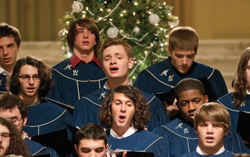Pioneer dancer, choreographer, and director, Arthur Mitchell, passed away at age 84 due to complications leading to heart failure in a Manhattan hospital on Sept. 19.
Arthur Mitchell became the first black ballet dancer to attain international stardom, all thanks to a guidance counselor who saw him dance and encouraged him to audition at the High School for Performing Arts in New York City.
After trying out, Mitchell won a scholarship to attend and studied there.
In high school, Mitchell experienced racism when lesser qualified students were chosen for roles over him because of his race.
At just 18 years old, Mitchell was offered another scholarship to study ballet at the School of American Ballet.
The School served as the training ground for the New York City Ballet.
On his experience going into the ballet, the dancer once said he wanted, “to do in dance what Jackie Robinson did in baseball.”
Mitchell started big by performing in Broadway musicals as well as by performing with the companies of Donald McKayle and John Butler.
In 1955, he joined the NYC Ballet and quickly became a premier danseur, eventually spending 15 years with the company.
By the next year, Mitchell became the first African-American principal dancer with the major ballet troupe.
BBC News reported in 1957, his pairing with white prima ballerina Diana Adams caused an uproar throughout the country.
Earlier that year, Mitchell said that despite the severe racism happening in the country, he was able to dance his way into people’s hearts.
From that moment on, the dancer received constant standing ovations. Soon enough, he was promoted to be a principal dancer with the company in 1962.
Famous choreographer and co-founder of the NYC Ballet, George Balanchine, also known as the “father of ballet,” created many roles for Mitchell.
Mitchell felt so incredibly strong about the issue of prejudice towards black dancers in the ballet world that he became extremely determined to open an all-black ballet company.
The dancer was also heavily inspired by Dr. Martin Luther King Jr.’s death to give back to the kids in Harlem.
Mitchell wanted to provide them with the same opportunities that he was given.
In 1969, Mitchell and Karel Shook founded the Dance Theatre of Harlem, which was an integrated dance school in Harlem, where he was born and raised.
The two started the school in a church basement with 30 kids in attendance.
Mitchell and Shook were then able to upgrade to a garage for space and after two months, had 400 kids attending dance classes.
The two charged 50 cents a week for kids to take classes and it became the first major classical ballet company in the U.S. to prioritize black dancers.
The Kennedy Center shared more information about Mitchell in the 1980’s on his accomplishments and milestones that he experienced with his dance school.
In 1988, their company became the first dance company to invite the U.S. Information Agency to perform in the Soviet Union as part of the U.S.-U.S.S.R. Royal Ballet of England.
This initiative was part of a series of historic collaborations that, specifically for the company’s newly created education project where black and white dancers, were paired together for.
Mitchell and Shook wanted to train talented children of all races in England.
They also became the first major performing arts company to visit South Africa, making a statement of the country’s increasing racial openness.
Mitchell was awarded the Kennedy Center Honors in 1993 and the MacArthur Fellowship in 1994.
The current Director of the Dance Theatre of Harlem, Anna Glass, called Mitchell a “true visionary.”
The theatre payed tribute to Mitchell on social media in a tweet saying, “His legacy of passion, power, and perfection will live on through each and every person he’s touched in his lifetime. We love you and we honor you.”
Today, many of his former students have careers in the arts, all because of Mitchell.
Ekaterina Bronshteyn, an adjunct professor of dance, said, “I found his attitude about life to be the most important treasure.”
Bronshteyn went on to say, “There are many great dancers, great talents entering and exiting the stage; but certain artists can touch us more deeply than others.”
Bronshteyn continued with, “The reason is that their life attitude, moral principals and humility resemble with us more. It sticks and we use it as a compass to navigate in our own lives. This is the truth about Mr. Mitchell’s life.”
The self-described “political activist through dance,” grew up in Harlem, where it was surprising for a kid to become a student over becoming a gang member.
Mitchell did just that by performing leading roles under George Balanchine and staying off of the streets.
Bronshteyn also added, “It used to [be] believed that black people physically, socially and intellectually couldn’t do classical ballet due to its European origins.”
“Mr. Mitchell successfully broke these stereotypes first for himself and later for his students,” she said.
Mitchell was one of the most popular dancers with the NYC Ballet in the 50’s and 60’s, and will always be remembered as an artistic pioneer.
IMAGE TAKEN from Smithsonian Magazine



